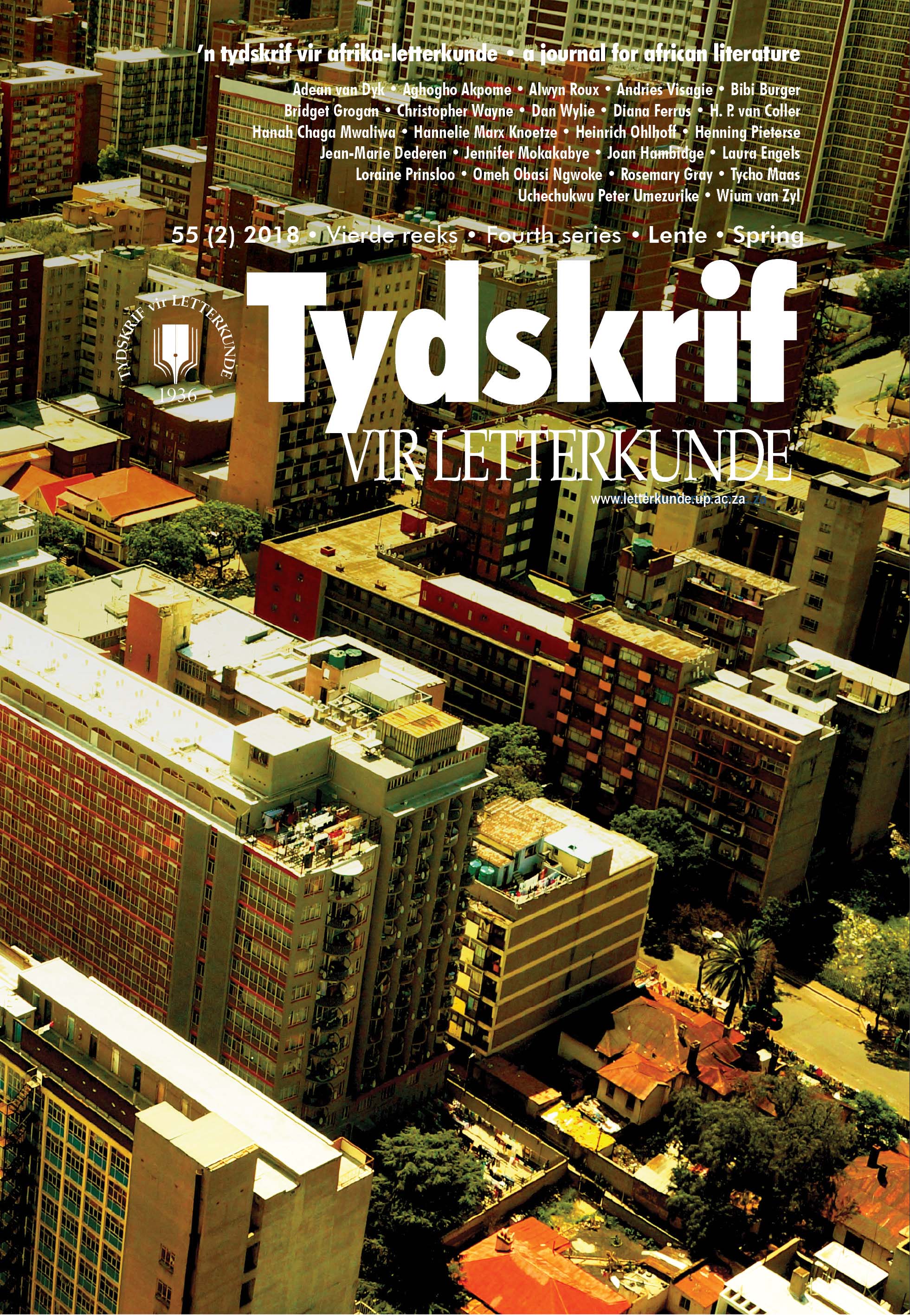Modern Swahili: an integration of Arabic culture into Swahili literature
DOI:
https://doi.org/10.17159/2309-9070/tvl.v.55i2.1631Keywords:
Arabic, cultural integration, linguistic borrowing, Swahili literatureAbstract
Due to her geographical position, the African continent has for many centuries hosted visitors from other continents such as Asia and Europe. Such visitors came to Africa as explorers, missionaries, traders and colonialists. Over the years, the continent has played host to the Chinese, Portuguese, Persians, Indians, Arabs and Europeans. Arabs have had a particularly long history of interaction with East African people, and have therefore made a significant contribution to the development of the Swahili language. Swahili is an African native language of Bantu origin which had been in existence before the arrival of Arabs in East Africa. The long period of interaction between Arabs and the locals led to linguistic borrowing mainly from Arabic to Swahili. The presence of loanwords in Swahili is evidence of cultural interaction between the Swahili and Arabic people. The Arabic words are borrowed from diverse registers of the language. Hence, Swahili literature is loaded with Arabic cultural aspects through Arabic loanwords. Many literary works are examples of Swahili literature that contains such words. As a result, there is evidence of Swahili integrating Arabic culture in its literature, an aspect that this paper seeks to highlight.
Downloads
References
Amidu, A. A. “Kiswahili: People, Language, Literature and Lingua Franca.” Nordic Journal of African Studies vol. 4, no. 1, 1995, pp. 104–23.
Akidah, M. A. “A Lexical Phonology Study of Modern Standard Arabic (MSA).” Diss. U of Nairobi, 2012. http://erepository.uonbi.ac.ke/handle/11295/8456.
Bertoncini, E. Z. “Some Remarks on Kithaka wa Mberia’s Poetry.” Swahili Forum vol.17, 2010, pp. 91–103.
Boesch, C. “Is Culture a Golden Barrier Between Human and Chimpanzee?” Evolutionary Anthropology vol. 12, no. 2, 2003, pp. 82–91. https://doi.org/10.1002/evan.10106.
Chiraghdin, S. and M. Mathias. Historia ya Kiswahili. Oxford U P, 1977.
Choge, S. C. “Fifty Years of Kiswahili In Regional and International Development.” The Journal of Pan African Studies vol. 4, no. 2, 2012, pp. 172–203.
Gromov, M. “Women Characters in the Novels of Ken Walibora: Victims or Winners?” Pathways to African Feminism and Development. Journal of African Women Studies Center vol. 1, no. 3, 2015, pp. 1–13. http://journals.uonbi.ac.ke/index.php/aws/article/view/1462.
Harries, L. “The Arabs and Swahili Culture.” AFRICA vol. 34, no. 3, 1964, pp. 224–9.
Massamba, D. P. B, Y. M. Kihore and J.I. Hokororo. Sarufi Miundo ya Kiswahili Sanifu (SAMAKISA): Sekondari na Vyuo. Taasisi ya Uchunguzi wa Kiswahili (TUKI), 2004.
Mazrui A. A. and A. M. Mazrui. The Power of Babel: Language and Governance in the African Experience. James Curry, 1998.
Mohamed, S. A. Sikate Tamaa. Longman Kenya, 1980.
Mwaliwa, C. H. “An Analysis of the Syllable Structure of Standard Swahili Loanwords from Modern Standard Arabic.” Diss. U of Nairobi, 2014. http://erepository.uonbi.ac.ke/handle/11295/77245.
Nasiri, S. A. A. Inkishafi. Longman Kenya, 1980.
Polome, E. Swahili Language Handbook. Center for Applied Linguistics, 1967.
Shaaban, R. Adili na Nduguze. Macmillan, 1952.
Walibora, K. Siku Njema. Longhorn, 1996.
wa Mberia, K. Bara Jingine. Marimba, 2001.
wa Mberia, K. “Al- Inkishafi: A Nineteenth Century Swahili Poem.” International Journal of Liberal Arts and Social Sciences vol. 3, no. 3, 2015, pp. 91–101. http://erepository.uonbi.ac.ke/handle/11295/87114.
Wafula, R. M. “The Use of Allegory in Shaaban Robert’s Prose Works.” Diss. U of Nairobi, 1989. http://erepository.uonbi.ac.ke/handle/11295/23810.
Wamitila, K.W. “Reading the Kenyan Swahili Prose Works: A Terra Incognita in Swahili Literature”. AAP vol. 51, 1997, pp. 117–25.
Downloads
Published
Issue
Section
License
Copyright (c) 2018 Tydskrif vir Letterkunde

This work is licensed under a Creative Commons Attribution-ShareAlike 4.0 International License.


 https://orcid.org/0000-0001-6465-6584
https://orcid.org/0000-0001-6465-6584


.png)